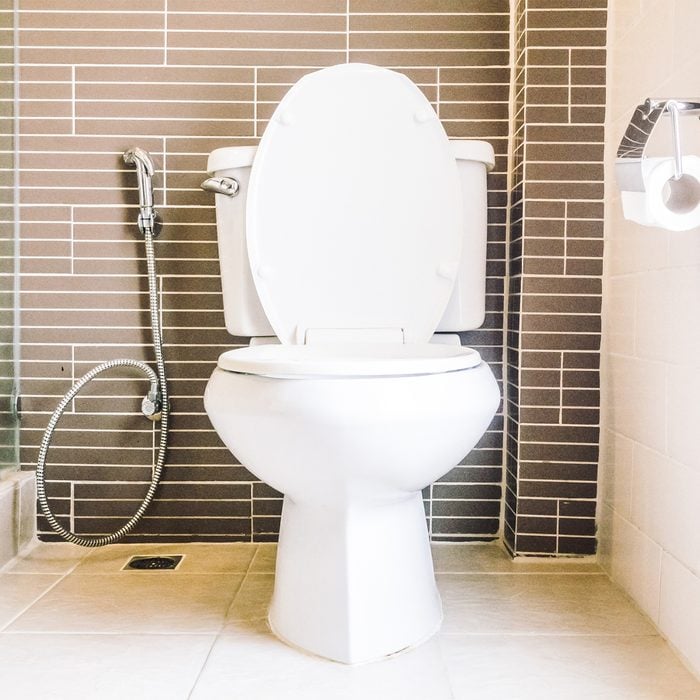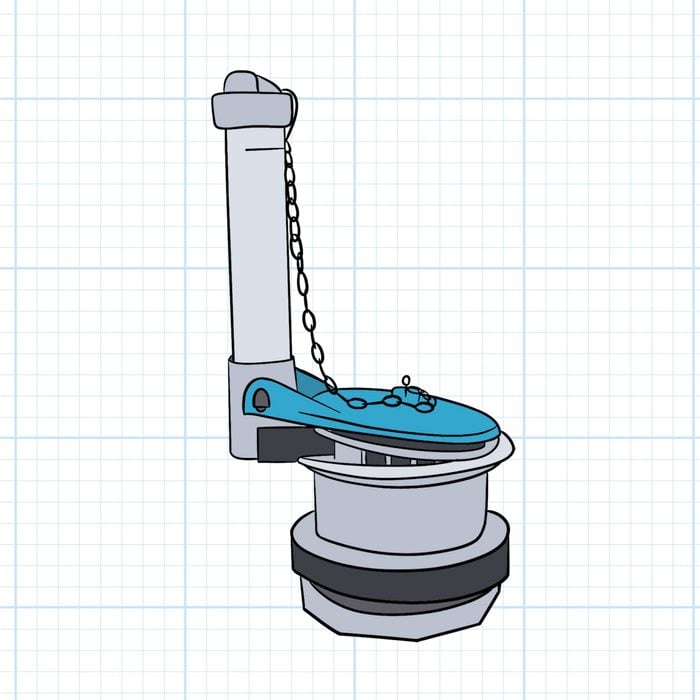
Flapper-Style Flush Valve
This flush valve has been standard on toilets since Korky first introduced it in the 1950s. Designs vary, but most consist of a two-inch drain pipe secured to the bottom of the tank by a plastic lock nut; an overflow riser to prevent overfilling; and a rubber flapper that covers the drain opening.
A chain connected to the flush handle raises the flapper. The force of the water flowing through the valve keeps the flapper up until the tank empties.
The valve itself lasts almost forever, but the flapper eventually wears out and needs to be replaced. Phantom flushing is one of the most common indications you need a new one. However, I’ve found a chain adjustment often fixes flapper leaks, saving money on a replacement.
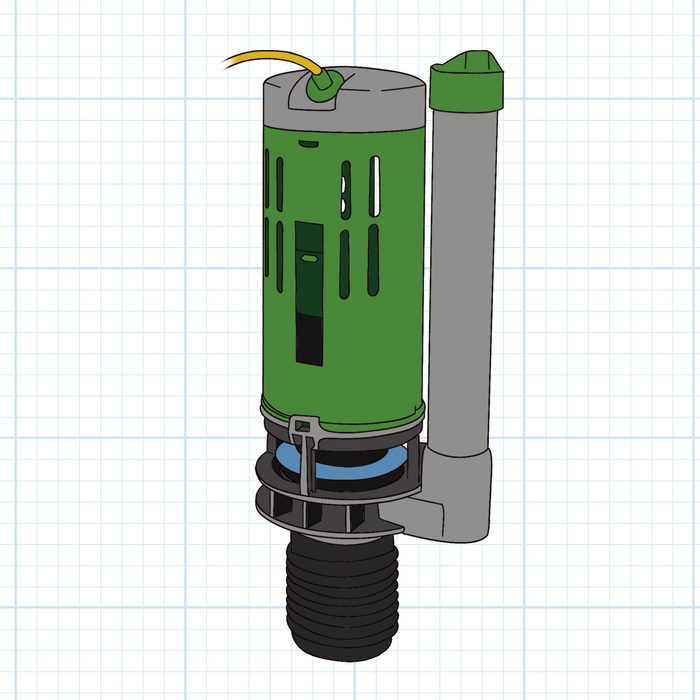
Tower Flush Valve
The tower flush valve on toilets from Mansfield and other manufacturers is a variation of the flapper valve, but it uses a hollow plastic cylinder instead of a flapper. The cylinder, connected by a chain to the flush handle, rides up and down along the overflow tube, sealing the tank when it’s down and allowing water to flow when it’s up.
This design offers improved flow. Unlike a flapper, the cylinder lifts completely away from the valve opening and doesn’t partially block it.
A tower valve as easy to service as a flapper valve. The most common maintenance needs are chain adjustment and periodic replacement of the rubber ring on the bottom of the cylinder. While you’re at it, get to know why your toilet whistles when flushed.
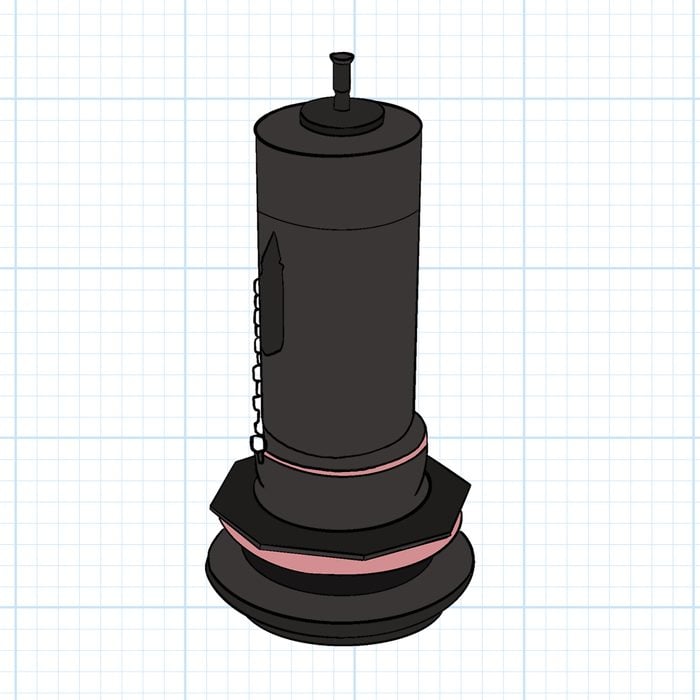
Canister Flush Valve
A canister flush valve is similar to a tower valve, only with a three- or four-inch drain opening rather than a two-inch one. That allows water to drain much more quickly.
This type of valve is common on Kohler toilets. When you flush, water basically drops all at once through the bowl and into the waste opening with a satisfying “plop” rather than swirling around.
The canister must have a large diameter to fit around the larger waste opening, but it works in the same way as a tower valve. It also comes with a rubber ring around the bottom edge that needs to be replaced periodically.
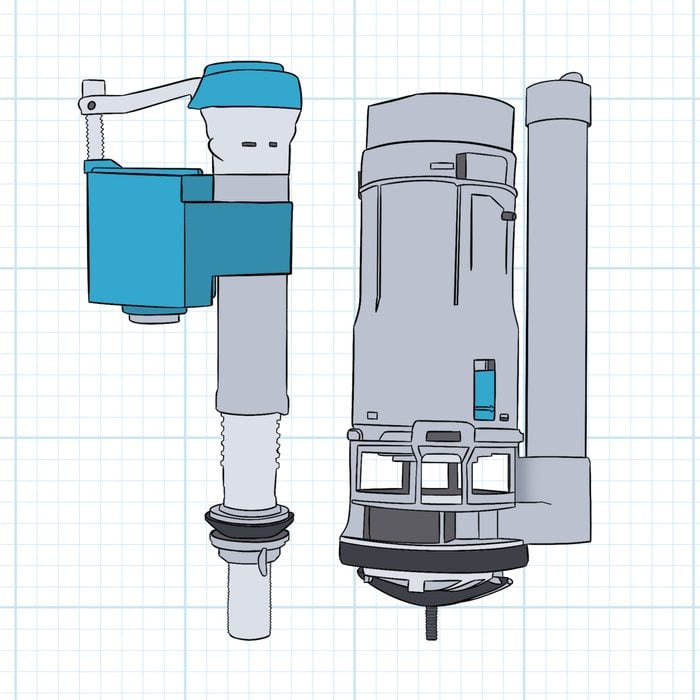
Dual-Flush Valve
These days, new toilets are low-flow, using only 1.6 gallons per flush or less. Many of these come with dual-flush valves.
Sealed in a plastic cylinder, these are activated by buttons on the tank lid or a lever with two settings. When you choose the smaller setting, the valve lifts partway for a partial flush. Choose the larger setting the valve lifts all the way for a full flush.
Flushing liquids requires less water than flushing solids. So if you remember to use the partial flush feature at the appropriate time, a dual-flush valve can save even more on your water bill.
Pro tip: I’ve learned to operate the standard flapper-style valve on our toilet at home like a dual-flush valve by pushing the lever only partway and releasing it when the tank partially empties. It works!
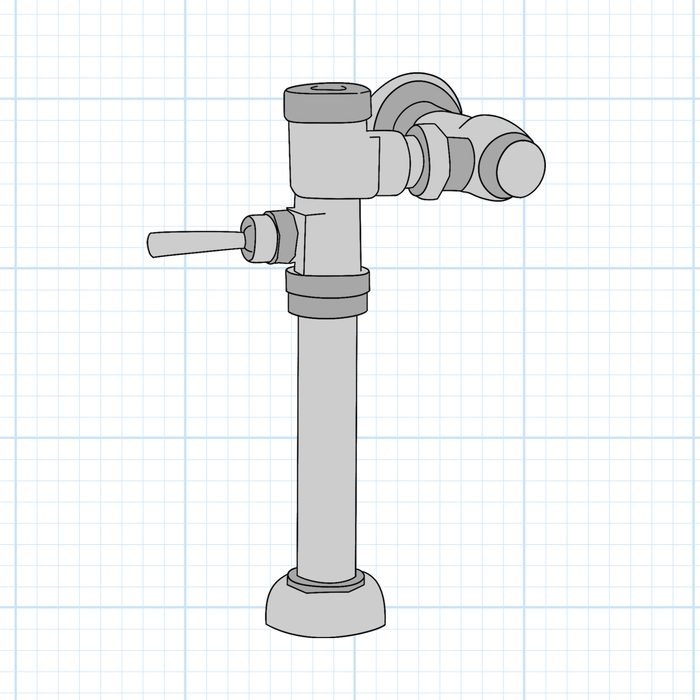
Flushometer
Everyone who ever used a public washroom is familiar with the flushometer, invented in 1906 by William E. Sloan and manufactured by Sloan, American Standard and possibly other companies as well.
A flushometer valve, enclosed in a stainless steel housing behind a tankless toilet, connects to the building’s water supply. Inside, a diaphragm or piston is held in place against a water outlet by pressurized water in a separate compartment just above it.
When you press the lever, you release the water in the compartment. This allows the piston or diaphragm to open and pressurized water to flow into the bowl. Release the valve and water pressure builds in the compartment, forcing the valve or piston to close, shutting off the valve. Not much can go wrong with a flushometer, and it seldom needs repair.
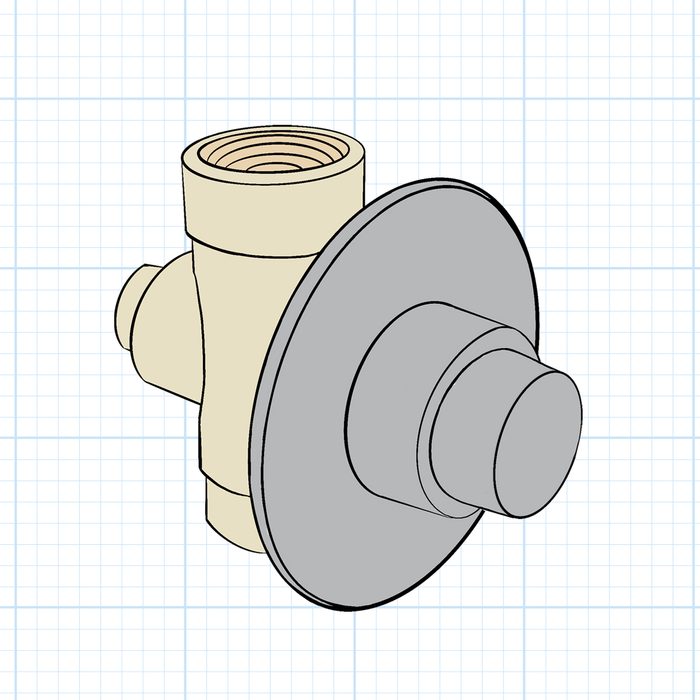
Concealed Flush Valve
When you use a toilet in an upscale public washroom and it flushes automatically, it’s due to a concealed valve hidden behind the wall. That valve is essentially an electronic flushometer, activated by a motion sensor or a button built into the wall.
Because concealed valves are flushometers, they’re reliable and seldom have problems. That’s good, because to repair one, you need access to it. That could involve breaking into the wall, creating an expensive clean-up project.
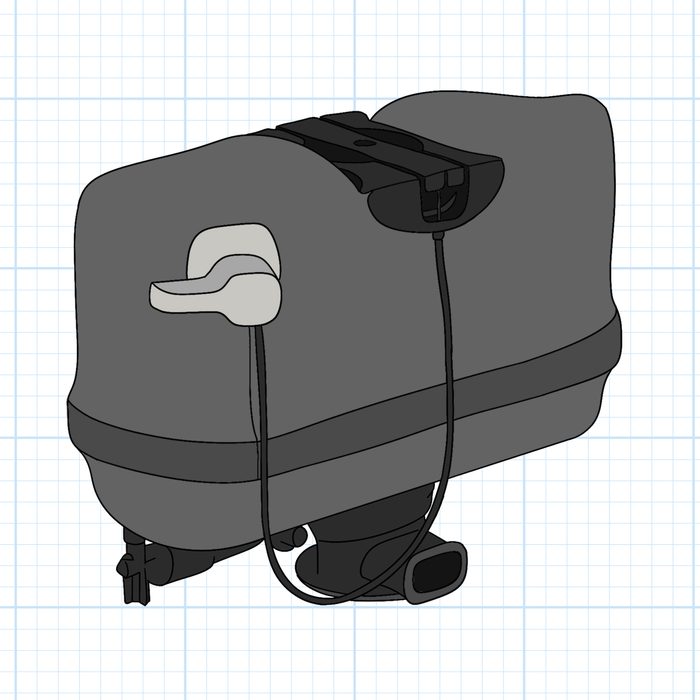
Pressure-Assist Flush Valve
A pressure-assist valve consists of a tank inside the toilet tank, with two chambers separated by a rubber bladder. One chamber is filled with air.
When the other chamber fills with water, the bladder stretches and compresses the air to pressurize the water. Pressing the flush handle sends pressurized water flowing into the bowl. After the flush, the tank refills with water from the building’s water system.
Unfortunately, you can’t retrofit a gravity-fed toilet with a pressure-assist valve. That’s because the toilet must be engineered to handle the flow of pressurized water. Manufacturers like Kohler, American Standard and Toto offer pressure-assist toilets.

